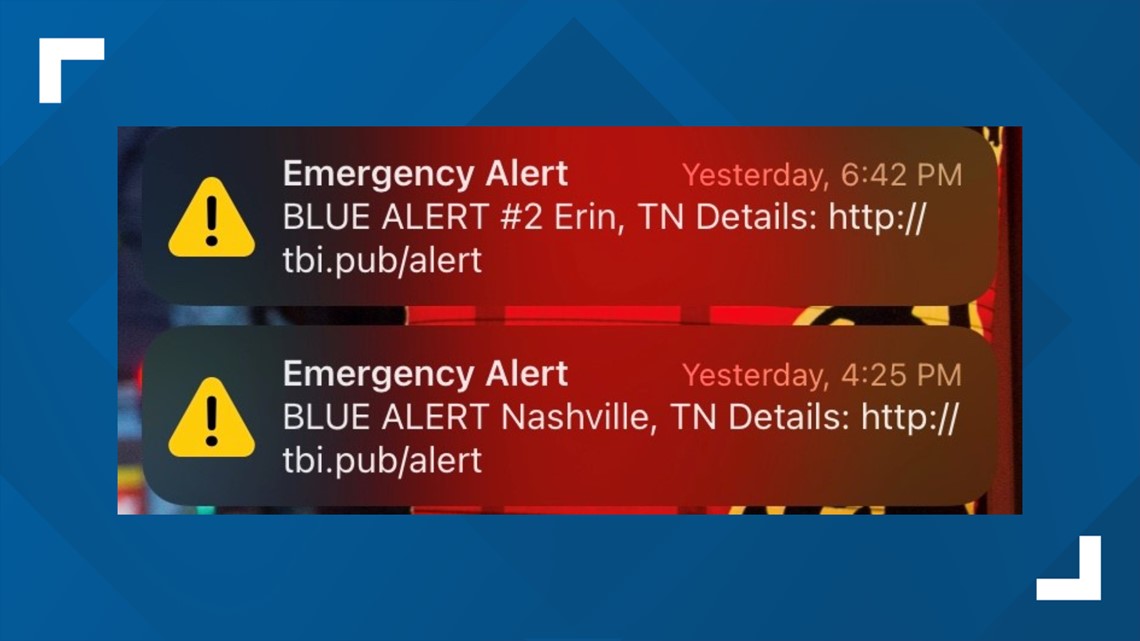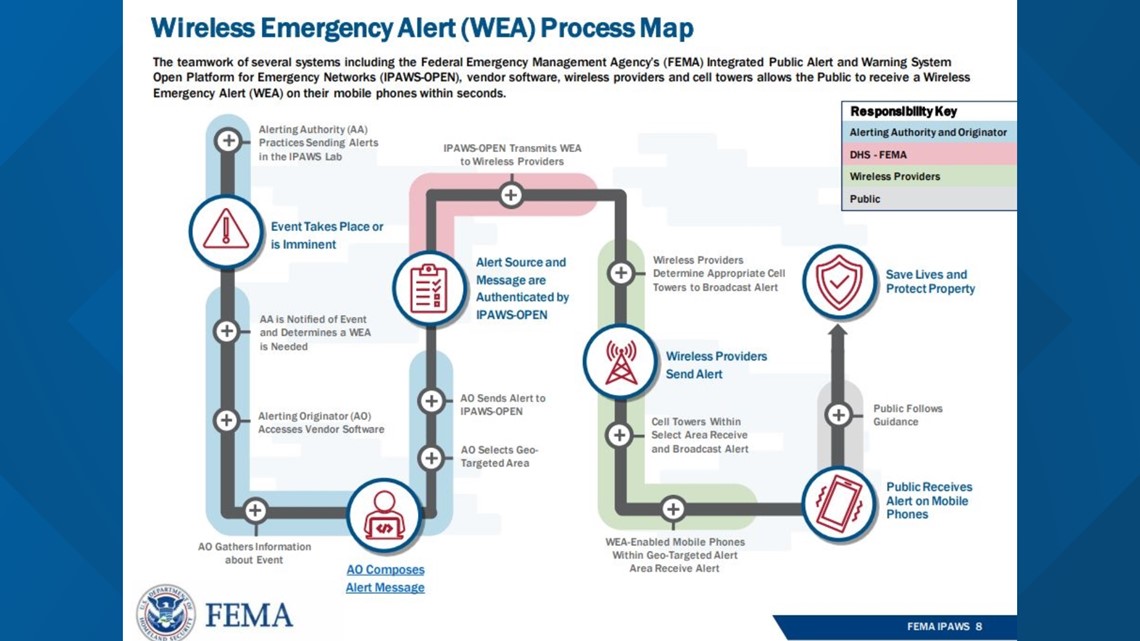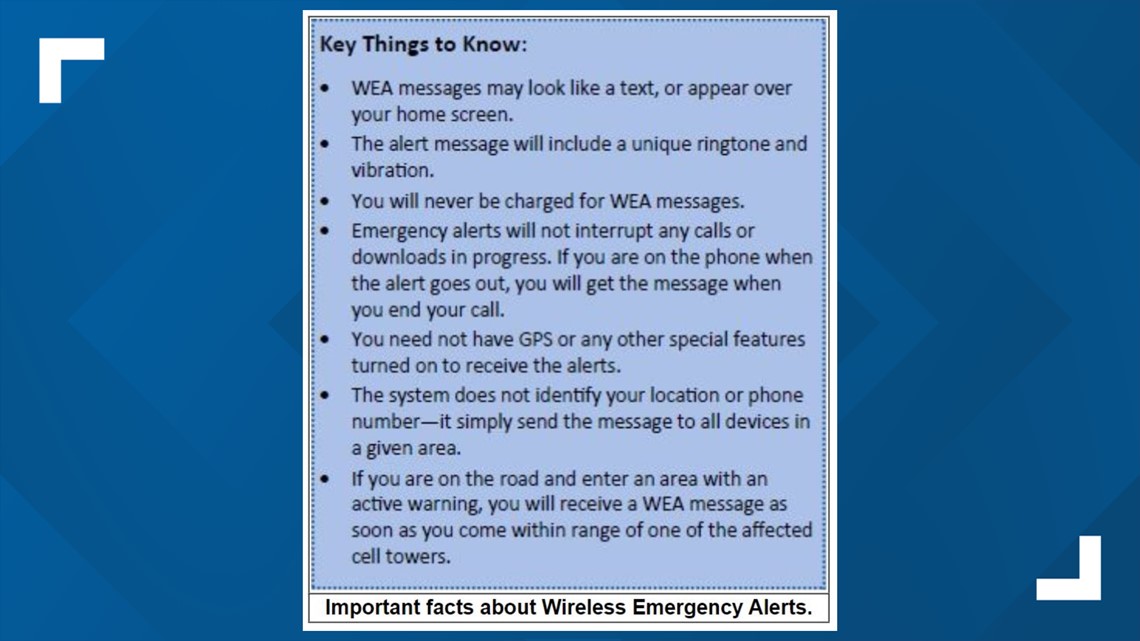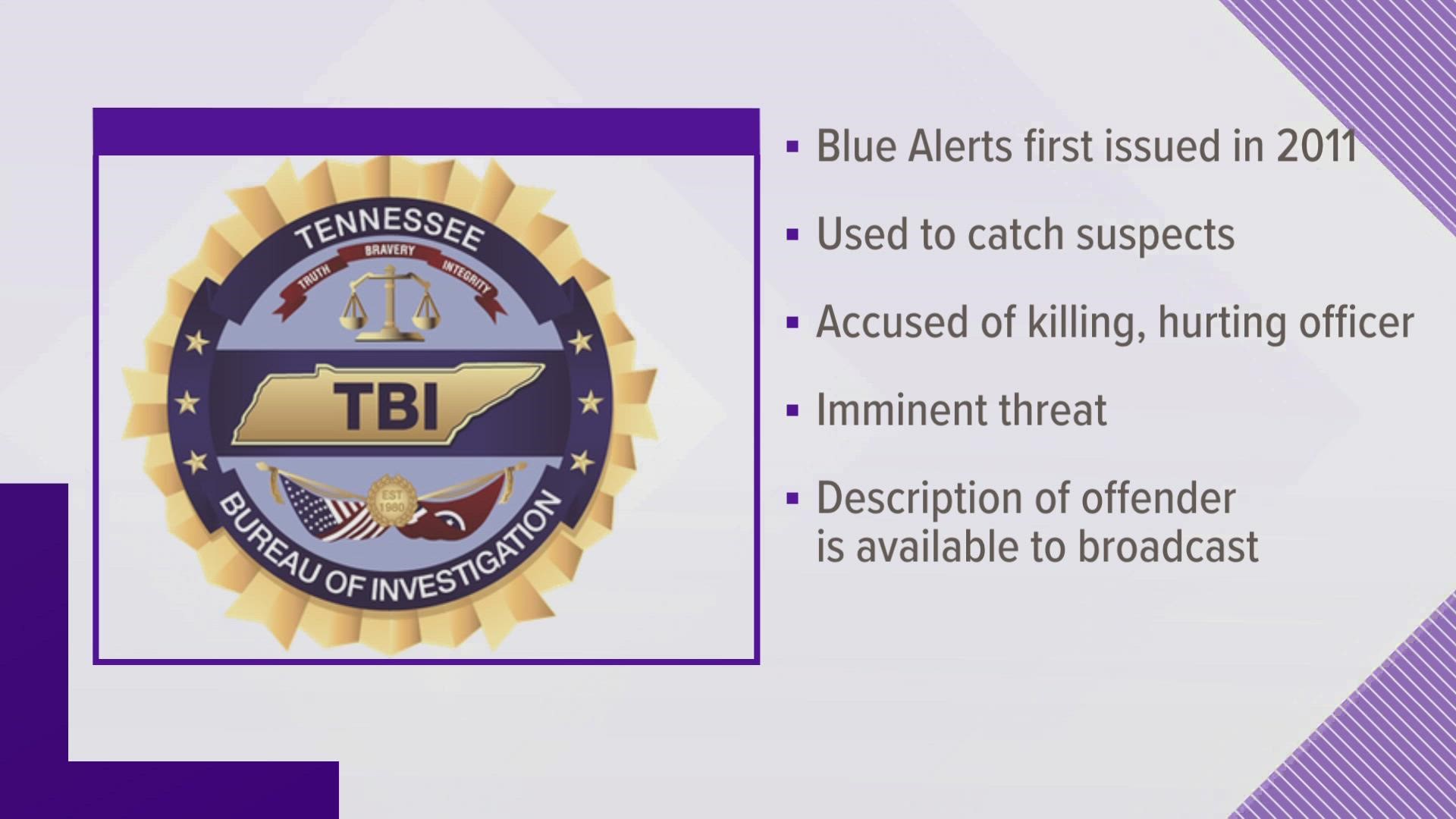KNOXVILLE, Tenn. — The Tennessee Bureau of Investigation apologized to the public Wednesday after statewide Blue Alerts sent to phones Tuesday were plagued with technical issues, causing frustration with people.
On Tuesday the TBI issued two different Blue Alerts in order to find two men accused of shooting law enforcement officers in different parts of Middle Tennessee Monday night.
Many people were unaware of the existence of Blue Alerts up until Tuesday when their phones began to blare an alert tone. These alerts are rarely issued in Tennessee because they are only sent when an on-duty Tennessee officer is seriously wounded or killed by a fugitive under a strict list of circumstances. The alerts exist in order to increase the chances of quickly finding particularly dangerous fugitives, much like AMBER Alerts are issued in Tennessee to quickly find abducted or missing children in danger.
The Tennessee Bureau of Investigation has issued just four of these Blue Alerts across the state in the past decade, and half of those alerts were issued Tuesday.
For some people, the alerts arrived many hours after they were issued. In some cases, the TBI said the alerts went off on phones in the overnight hours into Wednesday after the alert had been resolved.
"We’ve heard your frustration – loud and clear – about receiving multiple alerts on your mobile devices when two Blue Alerts were issued on Tuesday, June 28th. Some people received audible notifications overnight, many hours after the actual Blue Alerts were issued and resolved," the TBI said Wednesday. "That’s frustrating and inconvenient, for all of us. And for that, we apologize."
The TBI alerts were issued out of Nashville and Erin, containing a link to the TBI's Twitter account. People criticized the alerts Tuesday for not containing more immediate information.


The TBI had to make a similar apology about its alerts in May 2018, which was the last time a Blue Alert was sent across the state. In that case, Tennesseans similarly did not have much awareness about what a Blue Alert was. People also complained that the alert, which warned them about an armed and dangerous fugitive, was too vague and needlessly alarming because it did not mention a location.
The TBI responded in 2018 saying the alert system they have to use, known as IPAWS, could only convey a small amount of the information in an alert with a 90-character limit. The TBI said then it would work to find better ways to provide access to that information through the current structure it had to work with.
The issues the TBI has seen with its Blue Alerts have been reported for many years with emergency phone alerts sent across the country that use the same system. Federal agencies have said these problems are largely due to limitations with smartphone technology and how the national cellular alert system operates.
"Like you, we want our alert system to be as helpful as it can be, and always work to sharpen what we do based on your feedback," the TBI said Wednesday morning. "We hear many of your frustrations about what happened, and will certainly take it into account moving forward."
What Happened Tuesday?
The TBI issued two different Blue Alerts Tuesday, both for fugitives in Middle Tennessee.
The first was in the Nashville area for Samuel Edward, a man who was accused of shooting and wounding a Hendersonville police officer during a chase. The TBI issued that statewide alert after 7 a.m. Tuesday, which went out to some people immediately. Other people received it on their phones much later that afternoon hours after the alert had been issued.
By 9:20 p.m. Tuesday, Edwards was dead after Kentucky State Police shot and killed him in an "exchanged of gunfire," according to the TBI. Some people reported receiving the Blue Alert hours after Edwards died overnight.
The second Blue Alert was for B.J. Brown, a man accused of shooting and killing a woman in New Orleans and then shooting and wounding an Erin police officer during a traffic stop Monday evening. The TBI issued that statewide alert around 6:30 p.m. Tuesday. Authorities took Brown into custody Wednesday morning.
What Went Wrong?
The TBI said some people received the audible alerts on their phones long after it had issued them, sometimes twice. However, the TBI said it only sent out each alert once.
The long-standing issues with people receiving late, out-of-area, or double alerts is largely due to how emergency alerts are sent and received over cellular networks across the U.S. These alerts are sent to cover specific cell towers and are then distributed to phones that connect to towers with an active alert.
The TBI said it uses the same system for Blue Alerts as it does AMBER Alerts, known as IPAWS, which sends an alert out to several primary notification systems such as the Emergency Alert System, NOAA Weather Radios, interstate traffic signs, lottery systems, and the Wireless Emergency Alert (WEA) system.
The WEA system is the nationwide system used specifically to send out alerts to phones about imminent threats such as dangerous weather in the area, national emergencies and AMBER Alerts. Its effectiveness depends on whether most cellular providers in an area offer WEA service as well as the physical location of cell towers in a given area.


Nearly all phones are now capable of receiving alerts through this system, but it's not a guarantee the phone will actually receive an alert immediately because it depends on the phone's current reception and the location of the tower that's providing them cell service.
According to FEMA, wireless providers are also in charge of determining which cell towers broadcast the alert to the appropriate area, which adds extra chances for error.
For example, an emergency weather alert issued for a specific area in Knoxville shouldn't go off on a phone that is in Oak Ridge. However, if the phone in Oak Ridge picks up its cell signal from a tower in the Knoxville alert area, it may very well receive a weather alert outside its area. Likewise, a phone in the Knoxville alert area might not receive the warning if it was connected to a tower outside the alert area.


The accuracy of the WEA system is still very rough with most phones made before 2019, but newer phones are now being equipped with geo-targeting technology that makes these phone alerts significantly more accurate.
Federal agencies now require wireless providers to ensure emergency alerts for newer phones with geo-targeting are able to remain accurate within 528 feet outside the targeted area.
The Cellular Telecommunications and Internet Association found that only 34% of active smartphones in the U.S. supported geo-targeting as of July 2021, but the Federal Emergency Management Agency said most phones will have it as time goes on.
"In time, all mobile phones will support Enhanced Geo-Targeting, either through software upgrades or new purchases, but until technology catches up, alerts may be received outside of the targeted polygon," FEMA said.

